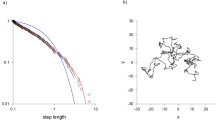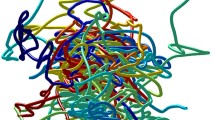Abstract
. We explore several hypotheses for the swarming behaviour in locusts, with a goal of understanding how swarm cohesion can be maintained by the huge population of insects (up to 109 individuals) over long distances (up to thousands of miles) and long periods of time (over a week). The mathematical models that correspond to such hypotheses are generally partial differential equations that can be analysed for travelling wave solutions. The nature of a swarm (and the fact that it contains a finite number of individuals) mandates that we seek travelling band (pulse) solutions. However, most biologically reasonable models fail to produce such ideal behaviour unless unusual and unrealistic assumptions are made. The failure of such models, general difficulties encountered with similar models of other migratory phenomena, and possible approaches to alleviate these problems are described and discussed.
Similar content being viewed by others
Author information
Authors and Affiliations
Additional information
Received: 25 April 1997 / Revised version: 14 September 1997
Rights and permissions
About this article
Cite this article
Edelstein-Keshet, L., Watmough, J. & Grunbaum, D. Do travelling band solutions describe cohesive swarms? An investigation for migratory locusts. J Math Biol 36, 515–549 (1998). https://doi.org/10.1007/s002850050112
Issue Date:
DOI: https://doi.org/10.1007/s002850050112




